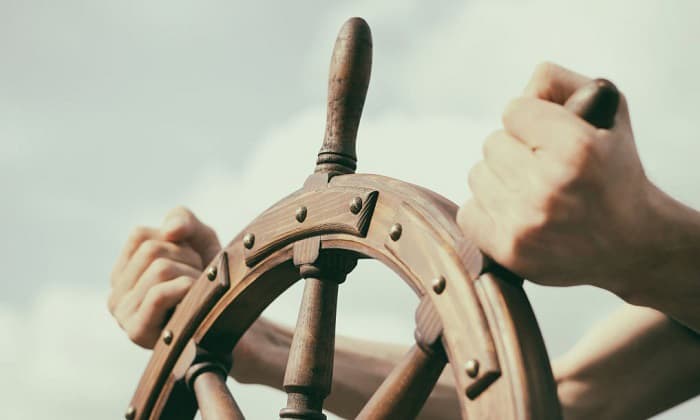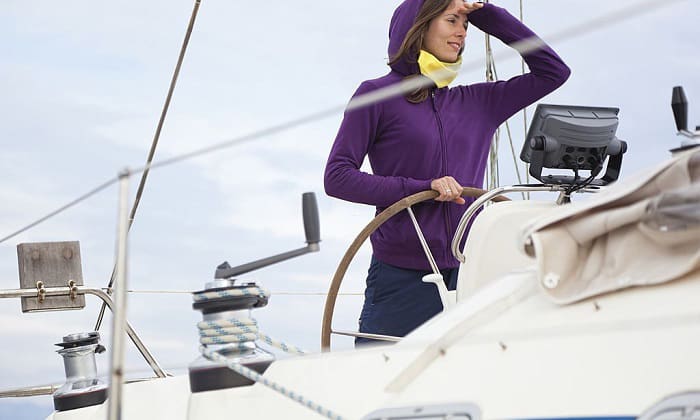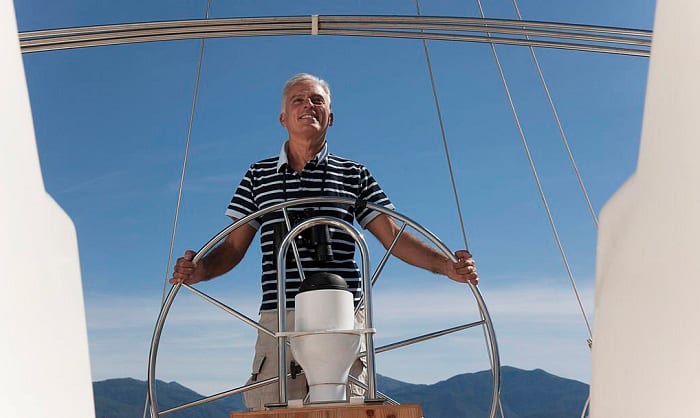Know what is the helm of a boat to control its course on the waves and water draft. It is important to not only know the helm of a boat or ship but also how it differs among boat kinds.
The boat’s helm is a wheel or tiller that lets you steer or take control the boat’s course. But there is more to learn about it. So, read the boating expert insights in this article!
Look at the essential information on what a boat’s helm is and how it effectively works for your safe navigation. We will also cover how to operate it.
Table of Contents
Step-by-step Guide In Learning What Is A Boat Helm
What To Prepare
Know these key terms:
- Draft – Water’s depth required for a boat to float freely.
- Operate – To take control of the boat
- Powerboat – Propelled by motor or machinery
- Restricted visibility – Conditions that restrain visibility
- See other essential key terms here and in the next sections.
Step 1: Know The Primary Features Of A Boat Helm
No matter the type of boat, the looks of a helm is one of the common frequently asked questions. Here’s a simplified version of the important features of a helm:
- Line Of Sight – Having a 360-degree line of sight is the best but not always possible on a boat. It allows you to circumvent your approach from the helm of a ship or helm sailboat in all angles and weather conditions.
- Secure the line of sight from the horizon, front water draft, port, and starboard sides even in restricted visibility.
- Navigation Equipment – In the advent of new technology, marine navigation becomes handy and safe using electronic instruments.
- The Global Positioning System (GPS), chart plotters, and spot-lock anchoring provides ease of long-range cruise control. Hence, it easy to secure the boat’s line of sight, positioning, and maneuverability.
- Ease of Comfort and Access – Comfort is a big factor in operating a boat effectively and safely.
It includes an ergonomic layout, easy deck access, navigation instruments, chart papers, stowage, and a minimalist boat’s helm. The helm ventilation on closed marine crafts like sport boats can also be done via overhead hatches, windows, or openings.
Step 2: Understand What is The Helm And Other Parts Of The Boat
Consider this vocabulary to better learn and understand the key parts of a boat, ship, vessel, or marine craft:
- Bow – The forward section or front part of a boat
- Freeboard – The distance between the waterline to the upper deck level. It measures from the lowest point of sheer that water can gain entry to the boat.
- Helm – A space in a boat where a helmsman, boatman, or crew takes control of a tiller or wheel. The helm is what onboard a boat to take control or steer the boat.
- In modern navigation, the helm includes the GPS, map or charts, radio, and other electronic navigation equipment.
- Hull – The main body of a boat from the deck down, excluding the equipment, fixtures, machinery, rigs, superstructure, and tools.
- Portside – The left-hand side of a boat when looking forward.
- Starboard side – The right-hand side of a boat when looking forward.
- Stern – The back end or rear section of a boat.
- Waterline – Marks the line on a boat hull that separates the submerged part from the section above the water level.
How To Operate A Boat Helm
1. Familiarize The Design And Layout Of Your Boat Helm
Treat the boat helm as your workspace or office that is on the go at any time. Unlike smaller boats with simple helm spaces, the bigger ones have designs you need to consider familiarizing with.
Each helm is designed for a particular purpose that is accurate and outfits the intended role to command its cruise. It does not only requires steering but also precise navigation that requires you to check the compass, boat, charts, and environment.
As you gain experience it will get simpler to command the helm of your boat.
2. Pay Attention To Your Senses
Improve the control of your boat helm by paying attention to your senses for safe and comfortable boating. Effective boat helming can be done by taking the first step: becoming conscious of using your senses.
As you become familiar with the design of your boat and boat helm, take time to feel your boat heeling. Doing so will allow you to feel the direction of the water draft and of the wind atop your ears.
Listening to the flapping sails and tossing waters at your sides will tell you the speed and direction. Even if you’re steering in a straight line, you’ll get to observe the waves and the pressure over your boat’s helm.
3. Take Full Control Of The Boat Helm
Check everything that is onboard or surrounding your boat helm to start enjoyable and safe boating. If the boat uses electronic or modern navigation, make sure all are working. Ensure the map or chart plotter and the Global Positioning System (GPS) are operational too.
Make note of your real-time position, speed, and direction of travel, and create your waypoint. It will indicate that something is good or not going as planned.
All of these will let your senses change or adjust to the forces around you. Always consider the wind, waves, and boat’s capacity, so you’ll steer naturally.
Helpful Tips
1. Stay On Sight With Land and Major Landmarks
Your best boat helming is to choose a waypoint ahead. Create your waypoints that should include a landmark, star, or cloud as a point of reference.
Focus on your waypoint, and when you happen to drift around your senses will help you back. It will allow you to correct or change course when necessary.
You can dock at a nearby shoreline or on a landmark when the marine environment gets tougher. At times, staying in sight near land and landmarks provides comfort to your passengers.
2. Put Safety First At All Times
Ensure to position the safety and security provisions in the helm of your boat. Strategically place the chair, deck passage, and grab rails either on top or about the helm access.
Correctly placing the helm, rails, chairs, and deck access, among other safety provisions secures your boat. Using non-slip soles around the helm helps your companions come off and on wet decks easily.
Also, putting a bench or dedicated helm chair addresses ergonomics and safety. Finally, a good layout guarantees your helm’s comfort.
Watch this YouTube Video by Boat House H2o to learn more about the helm and other parts of the boat.
Conclusion
I’m certain you now know “What is the helm of a boat?”. Continue learning these industry practices to control your boat’s course safely and effortlessly.
Use these useful recommendations from mariners to guide you in understanding and effectively commanding your boat helm. Treat it as your workspace to match your boat’s capacity and crucial role while cruising waters.
Operate and enjoy navigating tough waves and water drafts while considering other forces around your boat. Ensure your boat helming follows the kind and size of your boat for convenience and safety.

“My intention from the first day establishing Boating Basics Online is to provide as much help as possible for boaters who want to experience a first safe and convenient trip. So feel free to join us and share your beautiful journeys to the sea!”



